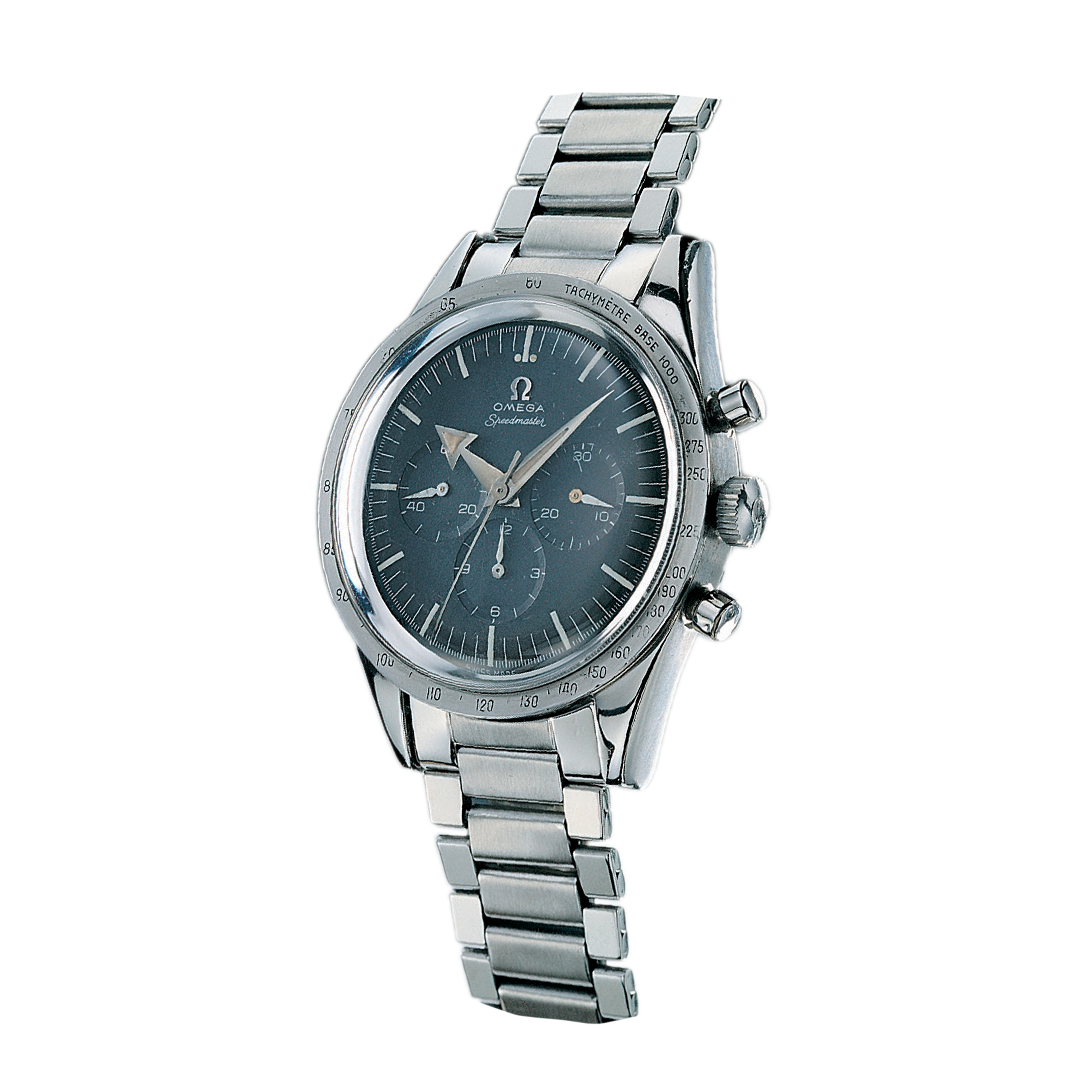Few timepieces in watchmaking history enjoy such a unique aura. Publicly launched in 1957, alongside the Railmaster and the Seamaster 300, the Speedmaster has been one of the best-known and best-loved chronographs ever since. Flight qualified by NASA for space exploration missions, the first timepiece on the moon: this robust chronograph has clocked up a long list of achievements throughout its more than six decades. The very first version of the Speedmaster was a chronograph made for car enthusiasts and racing drivers. Ref. CK2915 was distinguished first and foremost by its tachymeter scale that was unusually displayed on the bezel, as well as by its manual-winding movement, Calibre 321. It also featured an hours hand tipped by a wide arrow, known as ‘Broad Arrow’. In 1959 a second generation of Speedmaster models was introduced, without the ‘Broad Arrow’ hands and with a significantly different tachymeter scale, while retaining the manual-winding calibre and the symmetrical case. This Ref CK2998 would transform the Speedmaster’s destiny by propelling it into space. Indeed, the Speedmaster also captured the imagination for its ties with space exploration. The adventure began in 1962 when a group of astronauts privately bought flight watches. The first Speedmaster worn on a space mission was “Wally” Schirra’s CK2998, during the Mercury-Atlas 8 mission. Three years later, on March 1st 1965, the Speedmaster was “flight qualified for all manned space missions” by NASA. On July 21st this official recognition resulted in the Speedmaster becoming the first watch worn on the moon, by Buzz Aldrin. Throughout this time, the Speedmaster had steadily evolved and had been endowed with the latest technological developments. It was notably driven by manual-winding Omega Calibre 861. While the Speedmaster has seen a large number of versions, certain aesthetic codes have found their way through time and forged its highly distinctive style. Firstly, the curve of the lugs which, since 1964, imparts an asymmetrical touch to the case. Others include the ever-present tachymeter scale on the bezel, as well as the understated dial topped by a convex crystal and exuding a sense of impressive slenderness. All are characteristic elements of a design that has stood the test of time and continued to appeal to generations of mechanical watch enthusiasts since 1957. The Speedmaster has rarely departed from its original functionality: it is a chronograph born and bred, which didn’t prevent the launch, in 1986, of a Speedmaster with moon phases and date at 12 o’clock. Powered by Calibre 866, derived from the legendary 861, this model was given a slight refresh in 2003 then completely reviewed in 2016 when it was relaunched as the Speedmaster Master Chronometer Moonphase. Small seconds and pointer-type date are shown in a subdial at 9 o’clock, across from the chronograph hours and minutes. There is also a central seconds hand. A high-resolution moon-phase disk sits at 6 o’clock. A 2022 release, the MoonSwatch quartz watch reprises the overall look of the Speedmaster in 11 shades of bioceramic. Not to be overlooked, this was also the year of the Speedmaster Chrono Chime, driven by the most complicated movement ever from Omega. Developed in collaboration with Blancpain, Co-Axial Master Chronometer Calibre 1932 combines a chronograph with a minute repeater. It runs at the Speedmaster’s habitual frequency of 5 Hz to display tenths of a second.
Launch Year
1957
Functions
hours, minutes, seconds, chronograph, tachymeter scale
Movement
mechanical manual-winding
Distinctive features
first watch worn on the moon
Key Characteristics
• Manual-winding wrist chronograph • Tachymeter scale on the bezel
